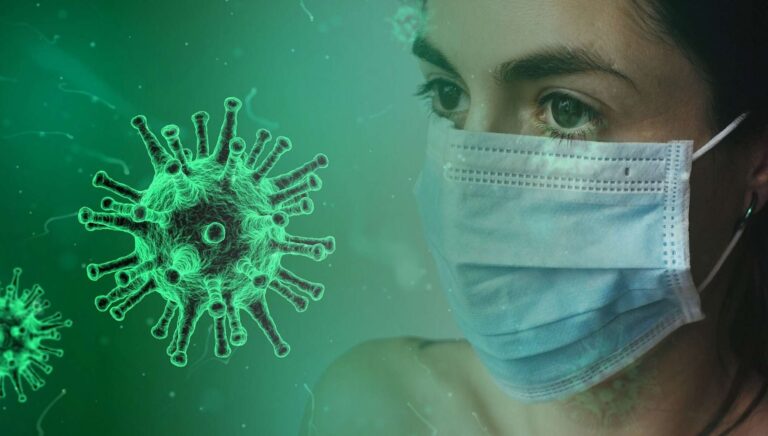It almost immediately touched every area of human life right after the late 2019 outbreak. Despite all that we know so far about this virus, new strains and symptoms still continue to appear. Especially today in the year 2024. In this article, we are going to talk about the signs of COVID-19 that one should not overlook this year and the changes that are being observed in the symptoms in order to prepare you better and safer .
A Clarion Call for Staying Updated on Covid-19 Symptoms
The Covid-19 virus is somehow agile, changes over time, and hence, develops new strains. It can enter the system of an infected person with varied symptoms during each new mutation. That’s why there is a high demand for updates on symptoms as it will enable you to identify the early signs in time and prevent self-contagion as well as those within your surrounding.
Read Also:
Spider Bites: Signs and Symptoms
Symptoms of Covid-19 in Others in 2024
Despite the changes in mutation and spread patterns, the main symptoms that patients have reported are similar to that observed over the course of last year. He also added that early detection of the disease assist in its control.
Respiratory symptoms include:
Lung tissue is heavily compromised in individuals who have contracted Covid-19. Currently, many people with a disease still have symptoms of respiratory illness, cough, and sore throat with shortness of breath. Fever or chills can be part of this presentation since they are.forms part of most respiratory infections.
Gastrointestinal Symptoms
Covid-19 and even the new variants of the virus are now being associated with gastrointestinal symptoms more commonly. Some of the symptoms contained in this group are Nausea and vomiting Diarrhea Reduced appetite Patients reported some issues with stomach aches, and it seems reasonable to notice when patients experience any digestive symptoms, if exposed to Covid-19.
Neurological Symptoms
Neurological manifestations emerged during the early course of the COVID-19 pandemic. These aspects are of relevance in 2024. Headaches, dizziness, and confusion, also known as “brain fog,” are possible Covid-19 infection symptoms. These may be mild or severe but can persist even when other symptoms disappear.
Emerging and New Symptoms of Covid-19
Healthcare workers have noted a few new and evolving symptoms that were more uncommon or never identified at the initial phase of the epidemic. Therefore, awareness of such symptoms is helpful in making early diagnoses and providing prompt treatment.
Skin and Sensory Changes
Recently, a new sign of Covid-19 has emerged: skin changes. Some people report the presence of rashes or redness or swelling on fingers and toes, which is referred to as “Covid toes.” Another symptom that has been characteristic of earlier variants but occurs in 2024 includes alterations in taste and smell without complete loss, such as having an unusual smell or taste.
Psychological and Emotional Symptoms
Besides the physical symptoms, Covid-19 has been linked with a higher impact on mental health. As much as it has created anxiety or depression in some and mood swings in them, the psychological symptoms tend to occur before or after the infection may persist for a while in some cases as evidenced in persons who develop a condition known as “long Covid.” They can monitor the changes and get professional psychological support when necessary.
Age Group Specific Symptoms of Covid-19:
Due to the difference in symptoms, there is a need to distinguish age-specific symptoms, especially in vulnerable populations like children and older adults.
- Children: Children have very mild symptoms like running nose, tiredness, and fever. Other children have caught multisystem inflammatory syndrome known as MIS-C. This is a rare condition but serious and associated with Covid-19.
- Adults: On this segment, adults can almost present with any symptoms imaginable from minor to extreme. Common symptoms affecting the respiratory and gastrointestinal parts of the body usually take the bigger percentage among them.
- Older Adults: In older adults, shortness of breath, confusion, and a high fever would be a sign of major symptoms. Because of weakened immunity, it may rapidly run rampant, hence a closer monitoring would be needed for them.
When to Call for Medical Attention
It helps to know when the symptoms are dangerous enough, which indicates that you need medical attention. Difficulty breathing, consistent chest pain, confusion, or lack of keeping awake are pointers towards getting medical assistance. A sudden change in skin color, such as bluish discoloration of lips and face, is an indication of severe cases and needs immediate attention.
Prevention and Monitoring of the Symptoms
Even though vaccination is considered to be the best way for avoiding infection and severe manifestations of Covid-19, hygienic practices and awareness about the symptoms are very much on par. Not crowding places, keeping one’s hands clean, and keeping distance from infected people minimizes the chance of getting and transmitting Covid-19.
If you start showing symptoms, self-isolation and monitoring changes can help you avoid spreading the infection to others. Tools such as pulse oximeters for oxygen saturation or a symptom diary can also be helpful in monitoring your condition and providing useful information if you are taken to a hospital.


